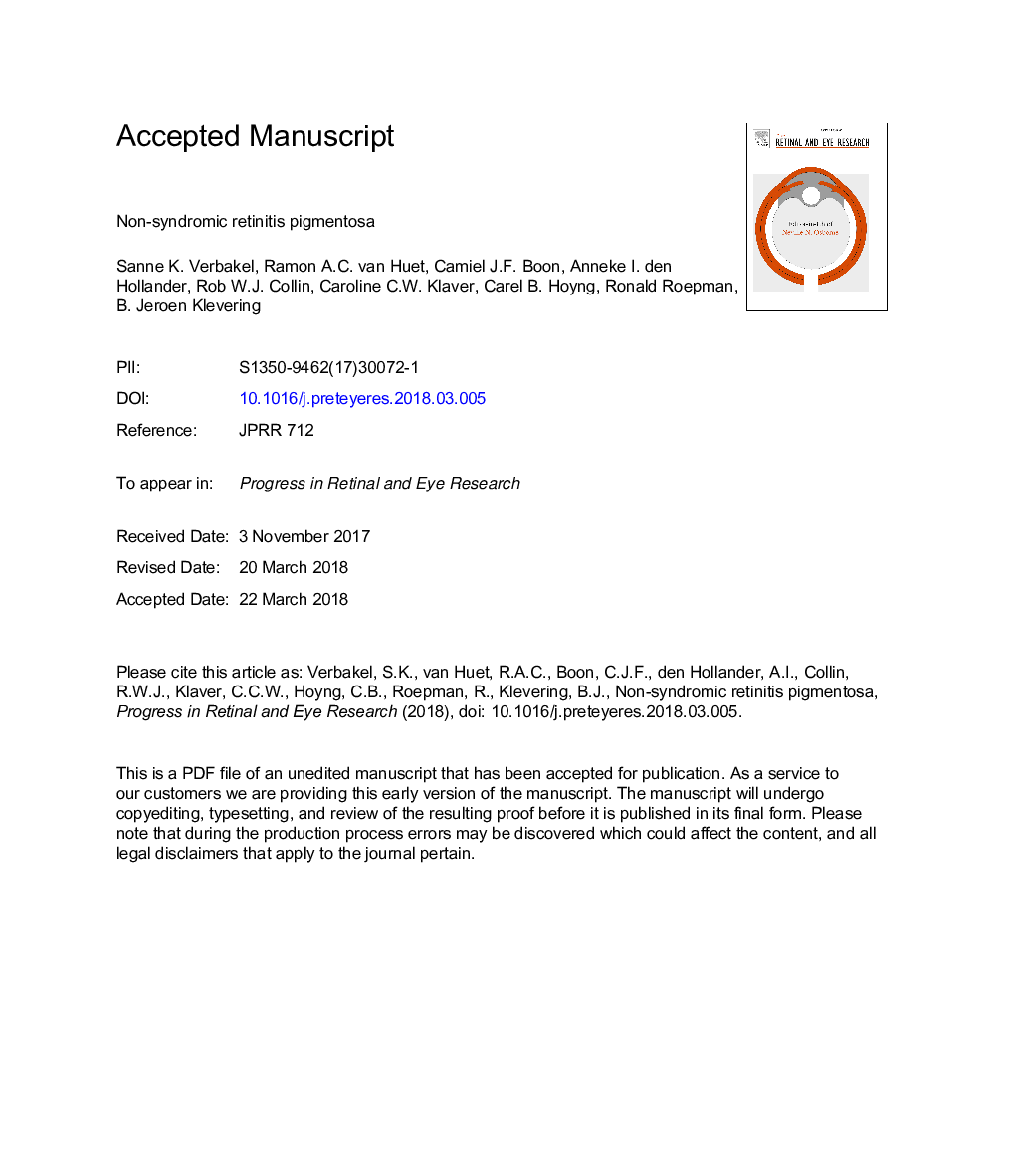| Article ID | Journal | Published Year | Pages | File Type |
|---|---|---|---|---|
| 10220988 | Progress in Retinal and Eye Research | 2018 | 65 Pages |
Abstract
Retinitis pigmentosa (RP) encompasses a group of inherited retinal dystrophies characterized by the primary degeneration of rod and cone photoreceptors. RP is a leading cause of visual disability, with a worldwide prevalence of 1:4000. Although the majority of RP cases are non-syndromic, 20-30% of patients with RP also have an associated non-ocular condition. RP typically manifests with night blindness in adolescence, followed by concentric visual field loss, reflecting the principal dysfunction of rod photoreceptors; central vision loss occurs later in life due to cone dysfunction. Photoreceptor function measured with an electroretinogram is markedly reduced or even absent. Optical coherence tomography (OCT) and fundus autofluorescence (FAF) imaging show a progressive loss of outer retinal layers and altered lipofuscin distribution in a characteristic pattern. Over the past three decades, a vast number of disease-causing variants in more than 80 genes have been associated with non-syndromic RP. The wide heterogeneity of RP makes it challenging to describe the clinical findings and pathogenesis. In this review, we provide a comprehensive overview of the clinical characteristics of RP specific to genetically defined patient subsets. We supply a unique atlas with color fundus photographs of most RP subtypes, and we discuss the relevant considerations with respect to differential diagnoses. In addition, we discuss the genes involved in the pathogenesis of RP, as well as the retinal processes that are affected by pathogenic mutations in these genes. Finally, we review management strategies for patients with RP, including counseling, visual rehabilitation, and current and emerging therapeutic options.
Keywords
Retinitis pigmentosainherited retinal dystrophyPigmented paravenous retinochoroidal atrophyIFTESCsRPCsIRDCSNBPPRIPSCsBBScGMPGTPInduced pluripotent stem cellsRetinal progenitor cellsBardet-Biedl SyndromePhenotypecyclic guanosine monophosphateGenotype-phenotype correlationCongenital stationary night blindnessGuanosine triphosphate
Related Topics
Life Sciences
Neuroscience
Sensory Systems
Authors
Sanne K. Verbakel, Ramon A.C. van Huet, Camiel J.F. Boon, Anneke I. den Hollander, Rob W.J. Collin, Caroline C.W. Klaver, Carel B. Hoyng, Ronald Roepman, B. Jeroen Klevering,
